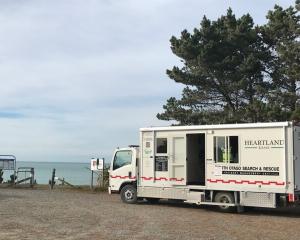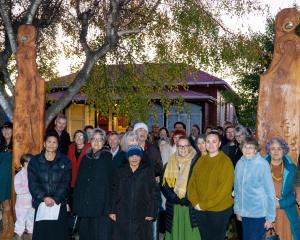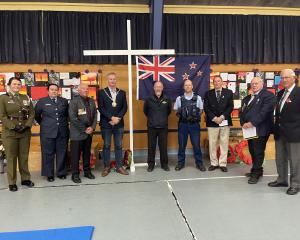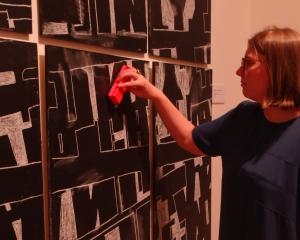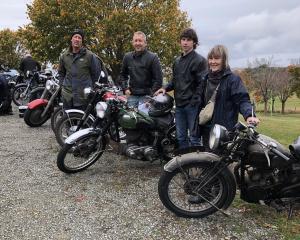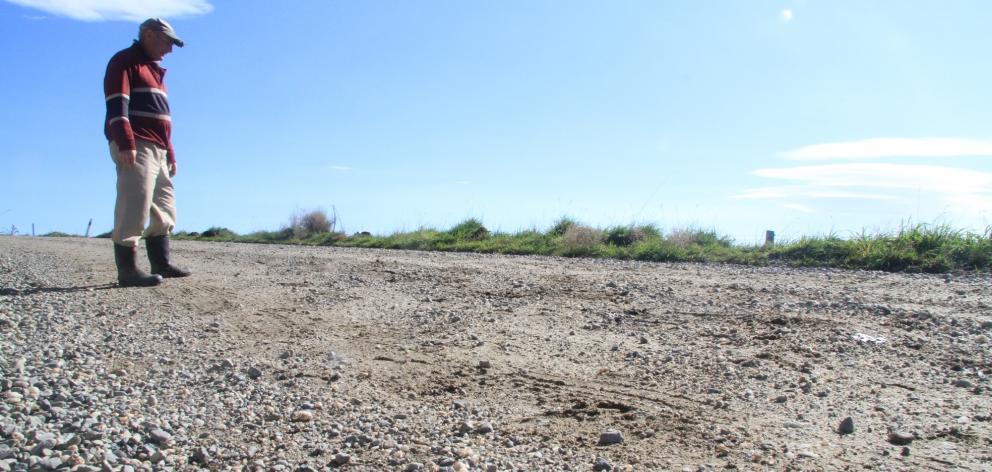
Eden Rd, Ardgowan Rd and Rosebery Rd might not be well known to most drivers in Otago, but Alister Calder knows the unsealed Waitaki roads very well — and he is concerned.
The roads at the edge of the district’s epicentre, Oamaru, "not 10km from the town boundary", have degraded and are ripe for failure.
Mr Calder took the Otago Daily Times on a brief tour to make clear the state of the roads he drives daily — and to highlight the issue he has been vocal about for years.
"If you had false teeth and left your mouth open, you’d lose them," Mr Calder, a retired farmer, said, as he drove at about 15kmh along corrugated Rosebery Rd.
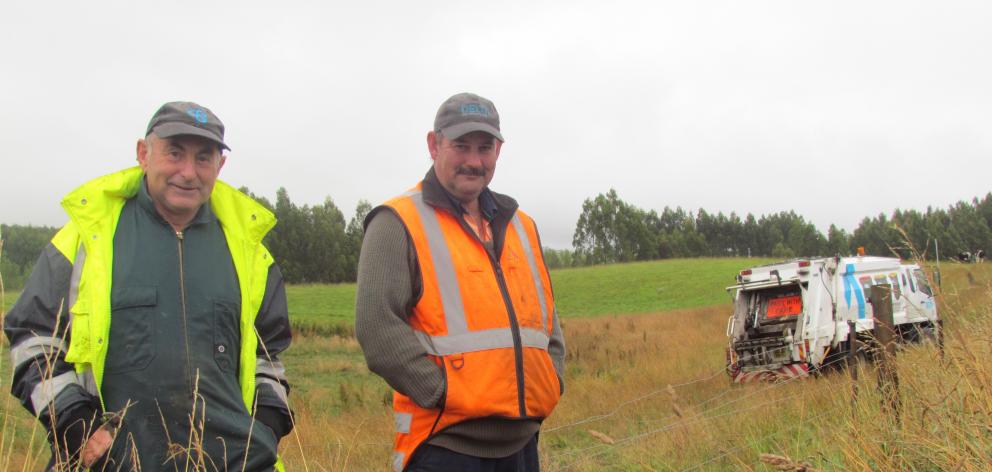
Without proper drainage, the roads he drove were at risk of "a major flood-out".
Mr Calder wanted the council to be "proactive" when it was not raining to avoid "some really devastating, major things happening".
But further, in some cases the roads were reduced to the foundational gravel from the "horse and cart days".
Over the years, vehicles had left the road so often he had stopped keeping count, but he said, in the past, he had "complained like mad".
Elsewhere, near Andy Denham’s more than 1400ha sheep and cattle farm on Taieri Peak Rd near Stoneburn, issues with roading cropped up as well.
There once was a time in the district when rural residents took pride in their roads, Mr Denham said, but now due to a lack of maintenance the road through his farm was "rendered dangerous" in inclement weather.
"It can be, in wet conditions, like an ice rink and if any of my family got hurt I’d be very annoyed," he said.
"My rates have gone from about $18,000 to over $26,000 — that’s about a $1000 a year increase in eight years — and we’re getting less work done. And I’m not happy."
And this winter when two of Tim Walton’s trucks left the road at low speeds, driving Coal Pit Rd, the Weston contractor said he expressed concern about the state of rural roads.
"At 20-25kmh an hour when you have got loaded trucks braking sideways, you’ve got problems," Mr Walton said.
"There are a lot more trucks on the road; with the dairy movement, with more contractors, with more machines, everything is getting bigger, they [the council] have got a massive job ahead of them to try and up-spec the road to what’s running on them."
The council’s asset manager, Neil Jorgensen, said the council had to find a balance "between people’s different expectations, and the different amounts they are prepared to contribute to the network, against everyone’s needs".
"At the end of the day, we as officers want to provide the safest network we possibly can. If we had the money, we would go and seal every road, widen every road — that’s what we would provide, because that’s the safest we can do," Mr Jorgensen said.
"People have got genuine concerns, the challenge is we have only got that limited pot of money and we need to make it go as far as we can."
Further, he said, as much as it was an insufficient answer for many ratepayers, drivers needed to "drive to the conditions ... and if you think a road is too unsafe to drive on, you shouldn’t drive on it, unfortunately."
The council’s roading manager, Michael Voss, said of the roughly $10million the council spent on its 1824km of roads — placing the district "well within" the top 10 longest local roading networks in New Zealand — $4million was spent on the maintenance contract with the balance made up from resurfacing, rehabilitations, minor improvements and "community-centred activities like footpaths".
The council was aware there was a "huge stress on some of those roads" and was working to "keep the roads as practically safe as we can".
Until recently, Waitaki’s roads network was able to withstand the stress from the use it received.
"When we had pastoral farming up until the nineties [1990s] I suppose, [rural roading] was perfectly adequate," he said.
"Significant changes" in the types of vehicles used on the roads including large "quad-type tractors", travelling large distances, and reaching 50kmh had stressed the roading network.
● Further south, the Clutha district, with nearly 3000km of roads, has the third-largest local roading district in the country behind Auckland and Southland and spends about $14million a year on its roads.
About 28%, or 809km, of the roads are sealed, leaving 72% unsealed.
Clutha District Council communications co-ordinator Rachel Askew said the council had no plan to change its level of maintenance for unsealed roads and was doing work to focus its spending on sealed roads.
Sealing roads costs about $300,000 a kilometre, "which means it would cost more than $600million to seal the gravel roads in our district".
Mr Jorgensen said, the rate of change in the use, and the vehicles using the roads, had outpaced the ratepayers’ ability to pay.
And, he said, critics who argued 20 years ago the roads in Waitaki were in a better condition were "quite right".
"Unless people want to make a massive investment into the roading network, it is a gradual increase, and we will get there, but it’s going to take a number of years."




